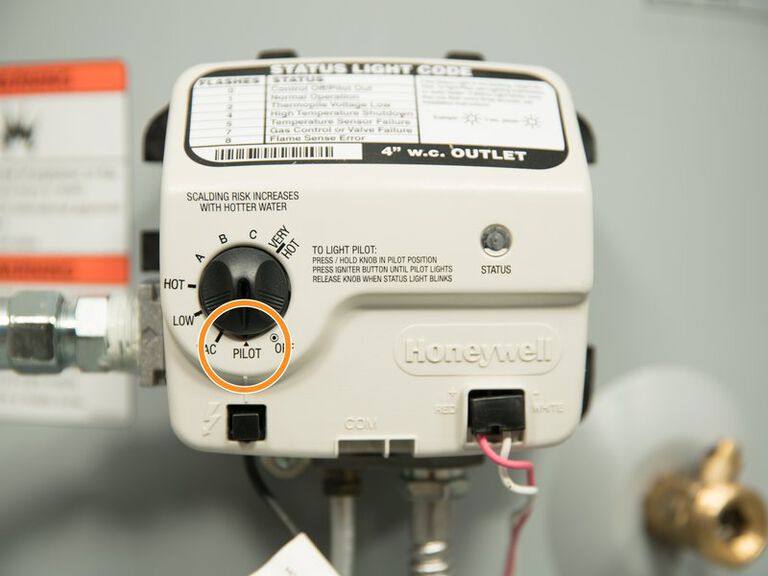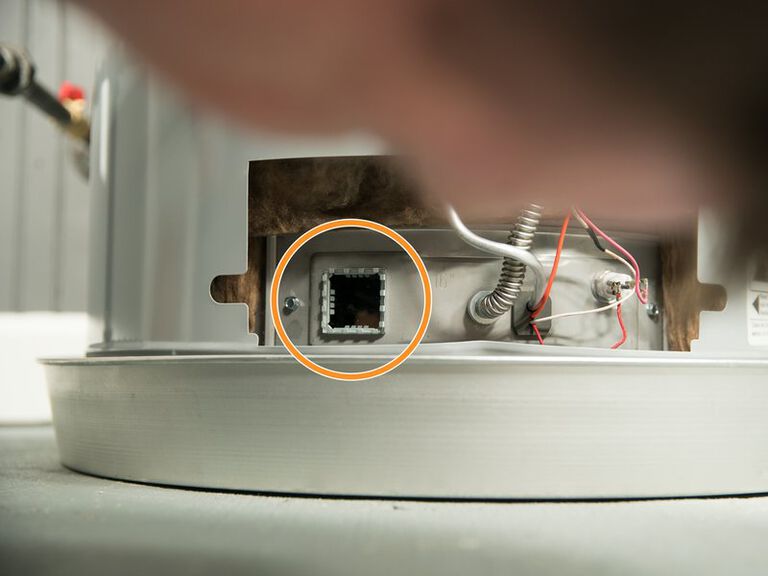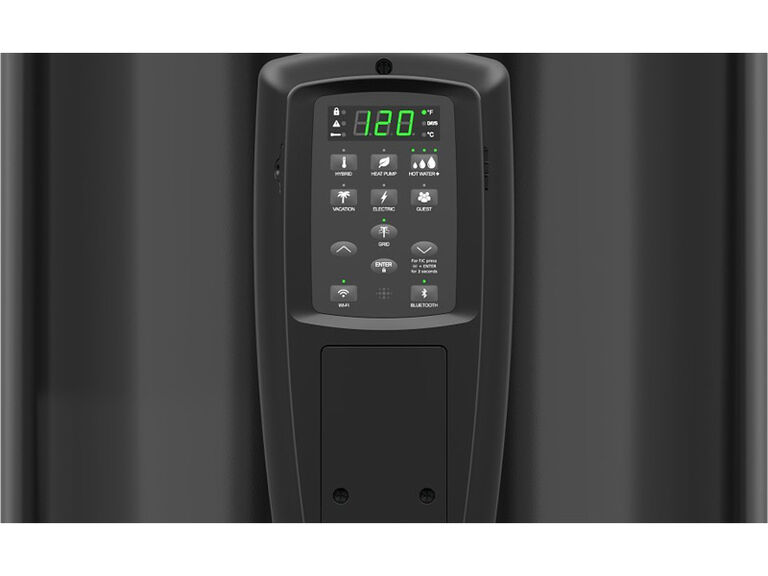
How to Turn Your Water Heater On and Off
Table of Contents
To help your water heater last longer and run at peak efficiency, you will need to perform a few periodic maintenance tasks that involve turning the water heater on and off. This guide will walk you through safely turning your water heater off and on, but should be considered secondary to the printed instruction manual that came with your unit.
How to Turn On a Water Heater
Before turning on the water heater, do a safety check to make certain that the drain valve is closed and that everything on the water heater is properly secured. Check there are no exposed wiring connections and that all water connections are tight. These instructions should be considered secondary to the printed instruction manual that came with your unit.
Follow these instructions to start a gas heater with a standard gas controller or a unit with a display panel and a user interface module (UIM) controller.
Steps for Lighting a Gas Heater With a UIM Electronic Controller
Gas water heaters with a touch display and UIM controller have an automatic startup cycle.
Enable the Water Heater
Set the "enable/disable" switch to "enable" and set the temperature to the lowest setting. Switch the "enable/disable" switch to "disable" and wait 5 minutes. Don't proceed if you smell gas; call for assistance according to the safety instructions attached to the water heater.
Start the Water Heater
Switch the "enable/disable" switch to "enable." Set the water temperature to your preferred setting. The water heater will start automatically and heat the water to the set temperature.

How to Choose the Right Water Heater for Your Needs
There are many factors to consider when choosing a new water heater. These include the type of heater, its hot water capacity, physical size, the fuel it uses and operating costs.

Type of Water Heater
If you're replacing an existing heater, then the easiest solution is to replace it with a similar unit. This will minimize the installation costs. Another option is to switch from a tank water heater to a tankless unit.
Water Heater Capacity
Check that the capacity of the heater is right for your family's needs. Use our XPERT Residential Water Heater Selector to find the right capacity for your needs.
Water Heater Size
If you’re upgrading to a larger tank water heater, you need to check that you have enough space to install it or consider another location. If there's insufficient space for a tank water heater, consider using a tankless unit.
Fuel
With the change in the costs of electricity vs. gas and propane, it's a good time to consider switching to a fuel that’s cheaper in your location.

Operating Costs
Although all A. O. Smith water heaters are efficient, certain models cost less to run. For example, a high-efficiency condensing gas tank water heater utilizes the heat from the exhaust gases and costs less to operate than a standard gas heater. If your preferred energy source is electricity, then a hybrid electric water heater that combines the efficiency of a heat pump with conventional electric heating is up to four times more efficient than a standard electric water heater.
Our water heater buying guide provides more information on selecting the right water heater for your needs. Alternatively, contact an approved A. O. Smith water heater installer near you for advice.
Learn More About Water Heaters

While similar, there are significant differences between gas and electric tank water heaters.
Gas Tank Water Heaters
Gas tank water heaters use either natural gas or propane as a fuel. They have a gas burner and a ventilation system to exhaust combustion gases outdoors.
A. O. Smith gas water heaters are efficient and economical to run. However, the installation of gas heaters is slightly more complicated and gas installations require periodic maintenance. Gas is potentially dangerous, and you should use a qualified installer.
Electric Tank Water Heaters
Electric water heaters use one or more electric elements to heat water. While their operating costs may be slightly higher than gas units, electric tank water heaters are simple and easy to maintain. The installation is less complicated, as electric water heaters don't need exhaust ducting and a gas supply connection. However, they do need a reliable electrical supply, and most jurisdictions require you to use a qualified electrician and plumber for installation.
Solving Problems With Your Water Heater
While reliable, water heaters need a certain amount of regular maintenance. This includes flushing the water tank, checking the pressure relief valve and cleaning the air filter located at the bottom of some gas tank water heaters. Potential problems can include:
- No hot water
- Water leaks
- Insufficient hot water
- Extremely hot water
- Bad odors
Check the troubleshooting section in the manual provided with your water heater. If you don't have a manual, you can find a copy through our support resources. Also, read our online troubleshooting guide. Contact an approved service provider in your area for assistance to troubleshoot, repair your hot water heater and provide warranty service.
Frequently Asked Questions
The process depends on whether you have a gas or electric model. For gas heaters, ensure the tank is full by opening the cold water line and running a hot water faucet for at least 2 minutes. Then turn on power to the gas control valve, open the main gas supply valve, and light the pilot by turning the control knob to pilot and pressing the igniter button until the status light flashes every 3 seconds. Adjust the temperature to your desired setting (120°F is recommended). For electric heaters, make sure the tank is full by opening a hot water faucet until water runs out, then flip on the circuit breakers and wait at least 1 hour for heating.
For gas heaters with standard controls, turn the gas control knob to pilot, press it in fully, and click the igniter button repeatedly for up to 90 seconds until the status light flashes. Once flashing, release the knob and adjust temperature. For gas heaters with UIM electronic controllers, switch enable/disable to "enable" and set your preferred temperature—it will start automatically. For electric heaters, ensure the tank is full, then flip on the circuit breakers. Standard electric models start immediately, while hybrid models perform an 8-minute diagnostic test first.
Restarting follows the same process as turning it on initially. Do a safety check to ensure the drain valve is closed, all water connections are tight, and there are no exposed wiring. For gas models, fill the tank by opening the cold water line and running hot water for at least 2 minutes. Turn on power to the gas control valve, open the gas supply valve, light the pilot, and set temperature. For electric models, verify the tank is full, then reconnect power at the circuit breaker. Wait at least 1 hour before using hot water.
For gas water heaters, check the status light on the control valve—it should flash every 3 seconds when operating properly. If it stays on without flashing, the pilot has gone out. For electric heaters with display panels, check the screen to verify the unit has reached the correct temperature. For models without displays, run a hot water faucet after the heating period (at least 1 hour for electric) to confirm hot water is available. Take care to avoid scalding when testing water temperature.














